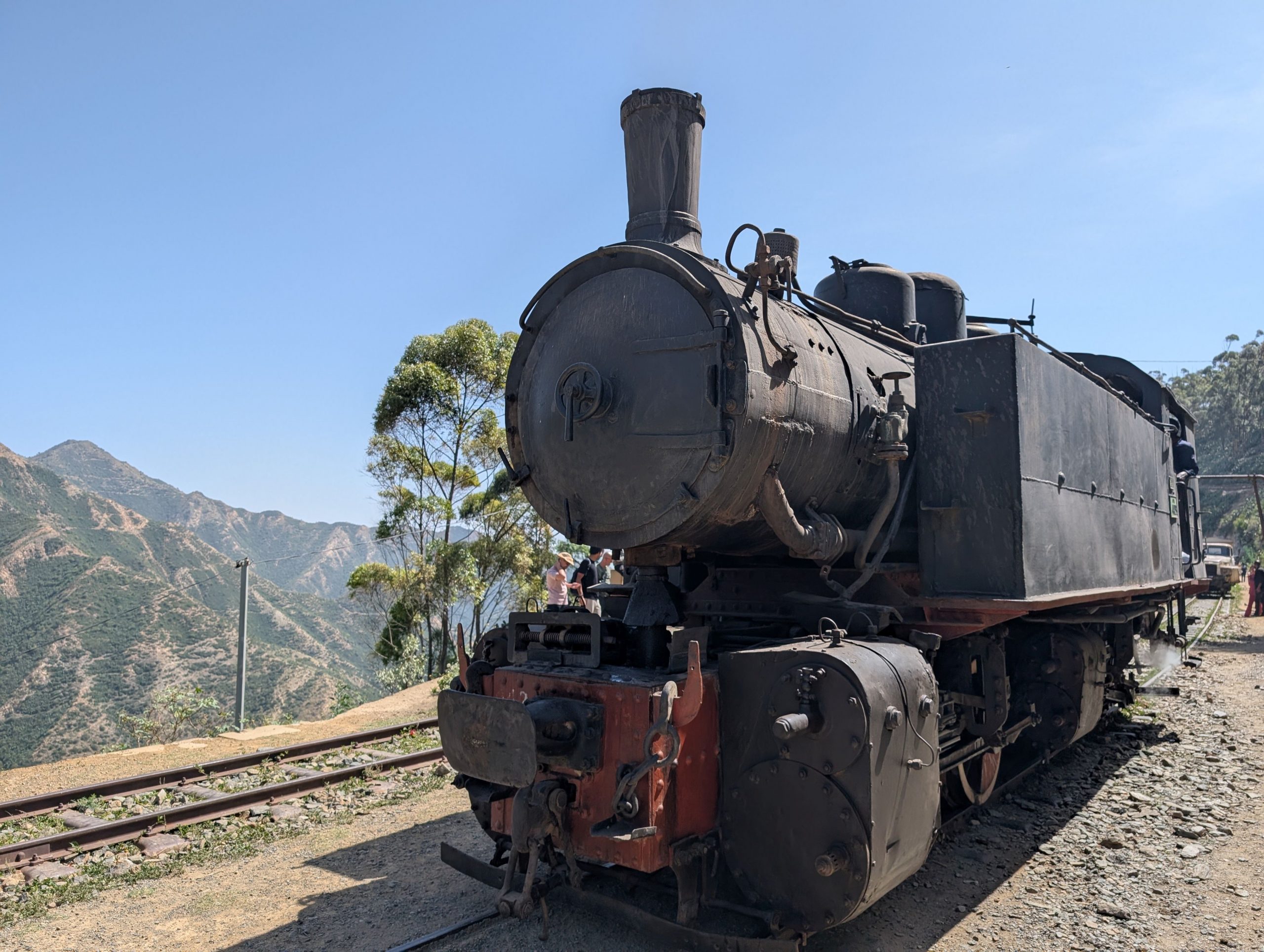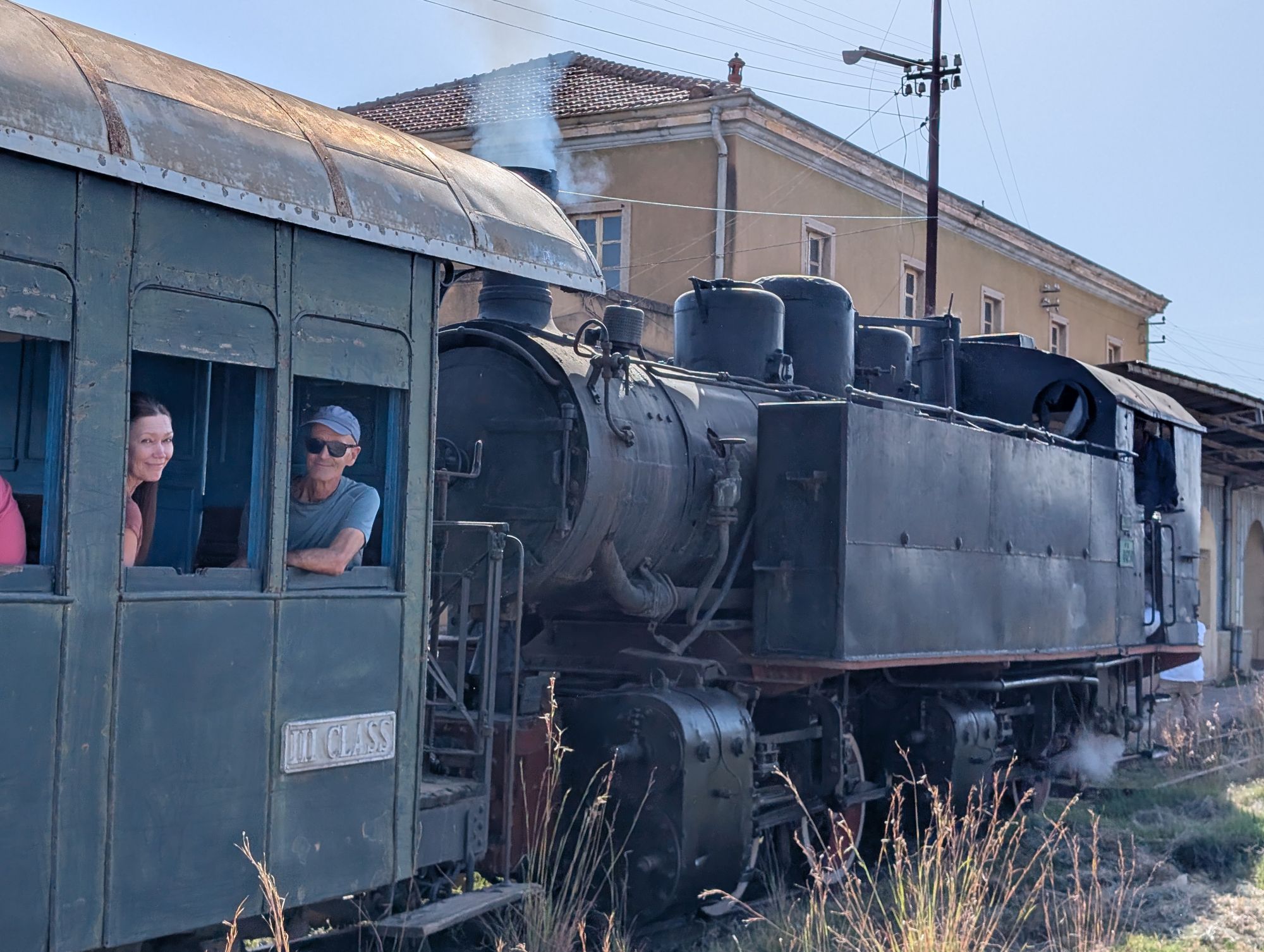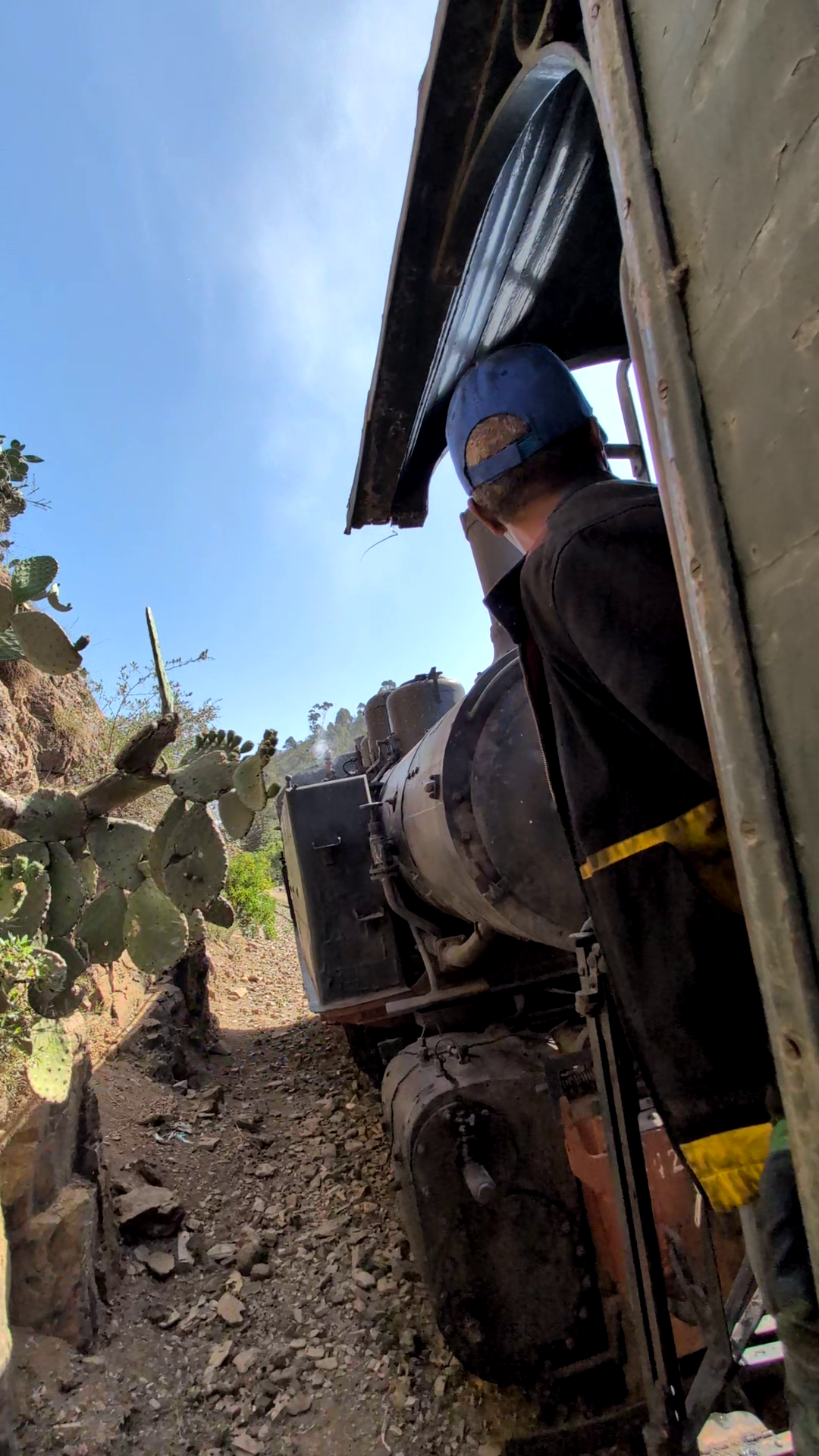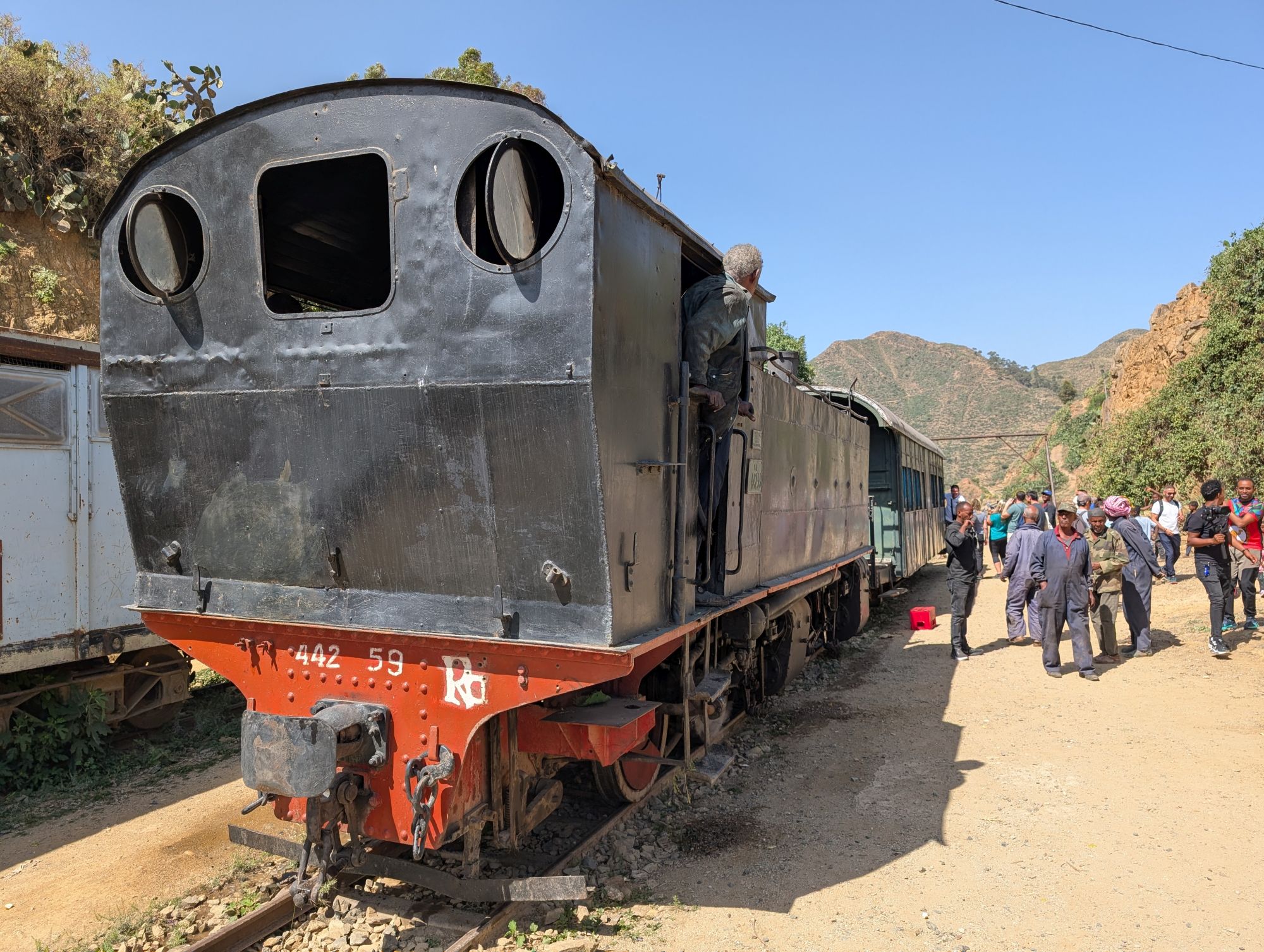Every country offers its own unique travel experiences, and at YPT, it’s our mission to bring those unforgettable moments to you. As proud ferroequinologists ourselves, few journeys excite us as much as Eritrea’s legendary Steam Train – though we’ll admit, the Mauritania Iron Ore train and the train to North Korea come close!
This incredible train ride is a highlight of our group tour to Eritrea for the national day celebrations.


The story behind the steam train of Eritrea
The Eritrean railway system was first developed under Italian colonial rule, which lasted from the late 19th century until the end of World War II. Construction began in the autumn of 1887, with the railway originally intended to serve strategic purposes – allowing rapid movement of military personnel and transporting minerals from across the country’s resource-rich interior.
By 1911, the line successfully connected the capital, Asmara, to the Red Sea port of Massawa. At its peak, the railway featured over thirty-nine tunnels and sixty-five bridges, with trains running daily across the rugged landscape. There were even ambitious plans to extend the line into neighbouring Sudan and Ethiopia. Beyond its colonial objectives, the railway became a key artery for local commerce, efficiently linking major cities like Nefasit, Keren, and Massawa and boosting trade across the region.
Why is the Eritrean Railway so special?
The Eritrean railway system stands out among the world’s railways for the remarkable engineering challenges it overcame. Eritrea’s rugged, mountainous terrain meant that connecting the capital, Asmara – perched over 2,000 meters above sea level, to the coastal ports required creative solutions. Since trains can’t handle steep inclines, engineers designed a stunning network of winding tracks, viaducts, and tunnels. The result is a railway that offers not only a functional route, but breathtaking panoramic views at a relaxed, scenic pace.
What makes the experience even more unique is that much of the original infrastructure and rolling stock remain unchanged since the Italian colonial era. The same steam locomotives, carriages, and narrow-gauge tracks used in the early 20th century are still in operation today. Riding this train is truly a step back in time from the vintage horn to the authentic mechanics of the steam engine. Outside of places like Sri Lanka and India, it’s rare to find historical railway equipment like this still in active use.



The current state of the Eritrea Railway Line
Following the departure of the Italian colonists, Eritrea’s railway system continued to operate for several decades. However, during the Eritrean War of Independence, services came to a complete halt for over thirty years. The conflict took a heavy toll on the infrastructure – steel sleepers from the tracks were even repurposed to build bunkers and fortifications on the front lines.
It wasn’t until 1996, after the war had ended, that a group of aging railway engineers – many of whom had worked on the line in its prime – took it upon themselves to restore the railway. Against the odds, they salvaged two functional locomotives, relaid the sleepers, and began the painstaking work of reviving the system. By 2003, the iconic Asmara–Massawa line was finally operational once more.
Today, however, the line is used exclusively for tourism, operating on a charter basis. Due to limited funding and a lack of modern investment, the railway’s upkeep is increasingly difficult. Each year, a little less of the track remains serviceable.
The line remained completely shut down from the onset of the pandemic until 2025, when YPT became the first travel company to revive it and bring the railway back to life.
At present, visitors can still enjoy a 3 hour roundtrip from Asmara to Arbaroba – named after the original “Friday-Wednesday” timetable from the Italian occupation period. Complete with stunning views, a stop in the village, and a traditional Eritrean coffee ceremony.
The future of this remarkable heritage railway hangs in the balance. In a country still grappling with international sanctions and economic challenges, hopes remain that investment will come – before this piece of living history disappears for good.


How to ride the Eritrean Steam Train
As a chartered service, the Eritrean steam train does not operate on a fixed schedule. To ensure the crew has enough time to prepare the locomotive, bookings must be made several weeks in advance. While departures typically take place in the morning, the exact timing remains flexible based on the day’s arrangements.
This unique experience comes at a premium, with the full charter costs. However, it can be arranged as part of our group tour or your independent tour to Eritrea, and the cost can be shared among members of your group – making it a more accessible and unforgettable journey.








